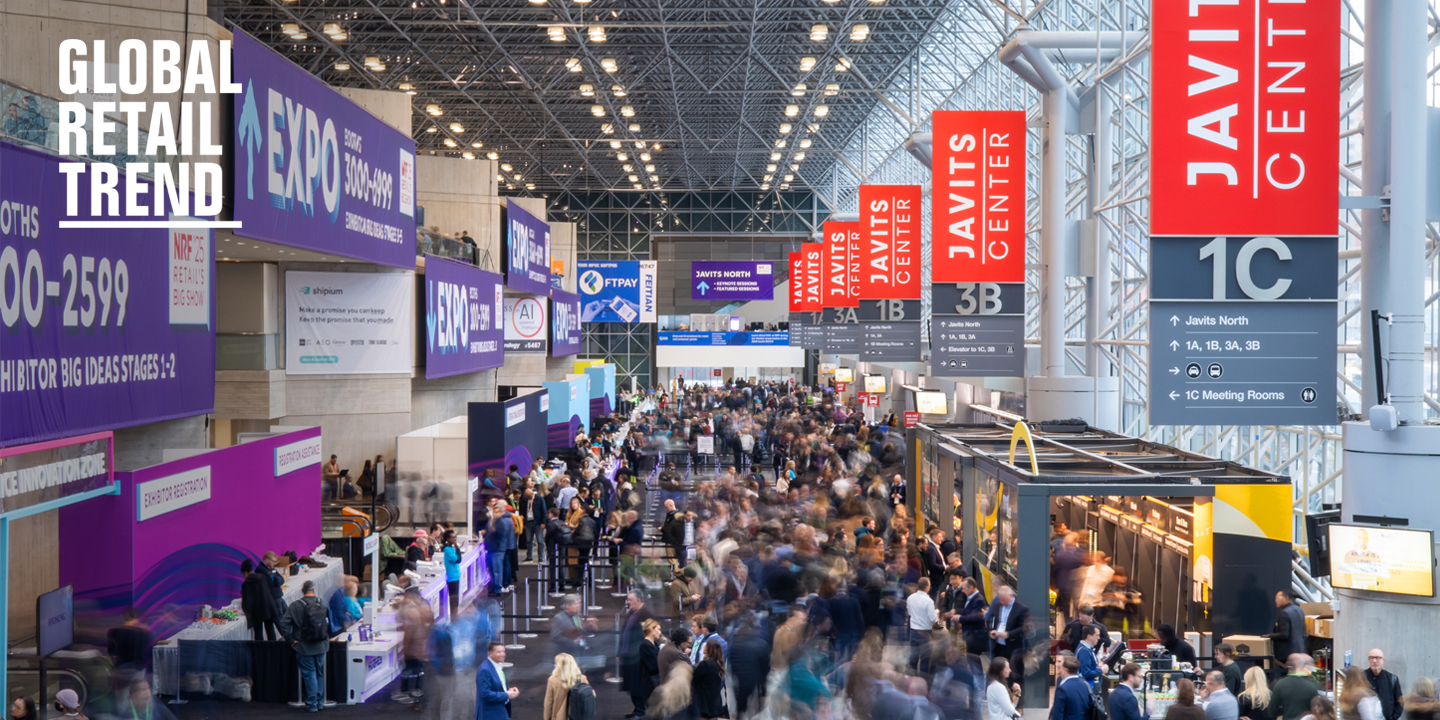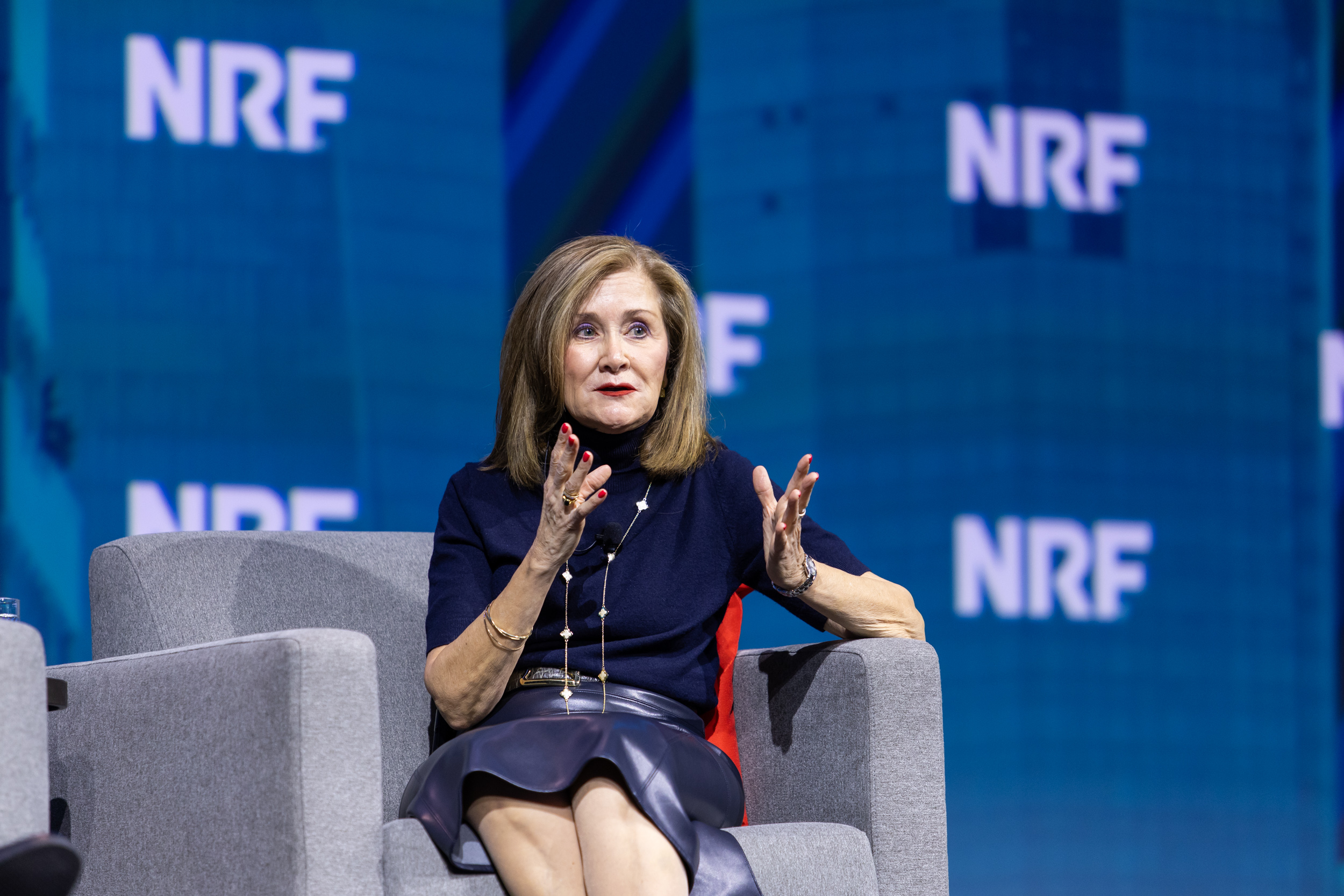
NRF 2025: This Year’s a Game Changer
NRF 2025: Retail's Big Show (NRF 2025) was held in New York City from January 12 to 14, 2025, with approximately 40,000 participants from over 100 countries attending.
This year's theme was ‘Game Changer,’ widely featuring retail application of artificial intelligence (AI).
More than 125 exhibitors showcased their latest AI-based solutions, with many AI experts taking to the stage to engage in lively discussions about the impact of AI on the retail industry.
The US retail industry generally fared well in 2024 despite a challenging business environment that included high inflation, rising interest rates, and international instability.
According to the National Retail Federation (NRF), retail sales in 2024 increased 3.6% year-on-year to a record $5.28 trillion (792 trillion yen at 150 yen/dollar).
Commenting on the outlook for 2025, David Solomon, Chairman and CEO of US investment bank Goldman Sachs, remarked, “There is a mix of changes. Some changes will be constructive for growth, some will be changes that could slow growth,” and added “What we have to look at carefully is how everything is balanced.”
In recent years, AI has attracted considerable attention as a technology that is transforming the retail industry.
Azita Martin, Vice President and General Manager of the Retail and Consumer Packaged Goods division of NVIDIA, the industry leader in semiconductors for AI, encourages all retailers to get started in AI, adding that AI initiatives need to be driven by top management.
AI can be used in a wide range of areas, from back-office tasks, to inventory management, to customer experience enhancement and personalization. For this reason, it is important for a retailer to clearly identify what are some of their biggest business challenges before embarking on AI. Martin identified three main areas for AI in retail: supply chain, physical stores, and e-commerce, advising to look at these areas and pick a specific challenge to be addressed.
She also stressed that it is important to establish a framework for evaluating the results of AI initiatives, and to continually update that framework as the initiatives progress to ensure they are indeed adding value.
US home improvement leader Lowe’s has been actively employing AI in partnership with NVIDIA and Dell Technologies to enhance customer and employee experiences.
The company is introducing computer vision, which uses AI to interpret visual information such as images and videos, into its stores. For example, the system can detect customers who are undecided about a product on the sales floor and alerts store clerks, allowing them to provide quick and efficient customer service at the optimal time.
Lowe’s has also rolled out an assistant app equipped with generative AI to its employees. The app allows store employees to instantly respond to a variety of customer inquiries, thereby enhancing customer experience.
They have also implemented a ‘digital twin’ in all their stores: a system gathers data from the physical store environment and replicates it in a virtual store space. The digital twin is updated several times a day based on real-time information, enabling visualization of the store shelves and facilitating improvements in product assortment.
Global consulting firm Capgemini conducted a consumer demand survey of 12,000 consumers in 12 countries across North America, Europe, and the Asia-Pacific region from October to November 2024.
The survey results indicate that generative AI is transforming the shopping experience.
The percentage of respondents who said they had used generative AI for shopping was 24%, up 4 percentage points from the previous year. This figure was even higher among younger generations, reaching 45% for Gen Z respondents (aged 18-25) and 41% for Millennials (aged 26-41).
Additionally, 68% of respondents said that they had purchased products recommended by generative AI tools, an increase of 16 percentage points from the previous year. Moreover, 58% said they had replaced traditional search engines with generative AI tools as their go-to tools for product and service recommendations.
Generative AI is also changing the type of communication that consumers expect from companies.
Seventy-one percent of respondents said they would like to see a broad implementation of generative AI across their interactions with businesses. Among Gen Z and Millennials, over 70% said they would like to converse with chatbots equipped with generative AI, such as ChatGPT. More than half of Gen Z respondents said they would like to have automated, personalized, real-time generative AI-powered customer support.
In contrast, concerns about generative AI are also widespread.
Over 70% of respondents cited concerns about bias in generative AI models, impersonation and misinformation, and deepfakes (AI-based artificial synthesis of videos and/or audio), up more than 10 points from the previous year.
The CORE Framework is an AI utilization framework for the retail industry developed by US-based research firm Coresight Research.
Placing organizational sustainability at its center, the framework classifies AI utilization into four categories: Creating New Business (C), Optimizing Operations (O), Reinventing the Supply Chain (R), and Enhancing Customer Experiences (E).
Coresight Research has mapped 10 recommendations for the use of AI in retail onto these four categories.
Under Creating New Business, use of AI can facilitate: (1) unlocking the potential of retail media, and (2) elevating the level of product development. Retail media is an area that can serve as a new source of revenue beyond the core business. Generative AI also accelerates and expands creativity in product development.
In the Optimizing Operations category, AI can play a significant role in: (3) accelerating the generation of product descriptions and images, (4) allowing cross-departmental access and analysis of data, and (5) creating a new workforce through agentic AI (AI that autonomously makes decisions and takes action).
For Reinventing the Supply Chain, axes around which AI utilization can center include (6) enhancing demand forecasting, and (7) bridging fragmented supply chains. For example, using generative AI to incorporate unstructured data, such as social media posts, can further enhance the accuracy of demand forecasting.
In the area of Enhancing Customer Experiences, AI can be effectively applied to (8) large-scale deployment of personalization, (9) delivery of accurate search results via contextual search, and (10) employee empowerment.


